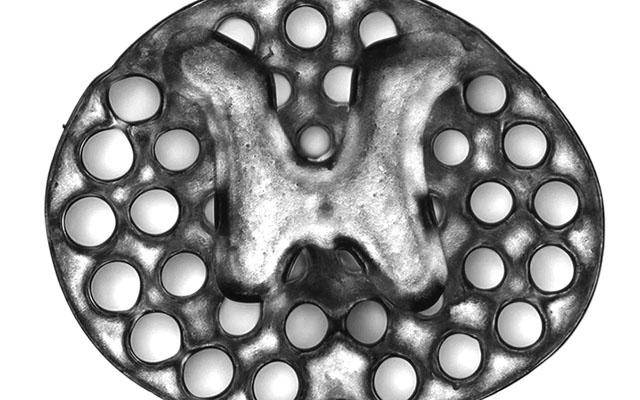In a big step forward for medical 3D printing, researchers from the University of California San Diego School of Medicine and the Institute of Engineering in Medicine have 3D printed spinal cord scaffolds and successfully implanted them into the spines of rats to treat spinal injuries.
The 3D printed spinal implants, which are filled with neural stem cells before implantation, have the potential to improve nerve growth across spinal cord injuries thus restoring lost nerve connections and functions. In the rat testing, the 3D printed spinal scaffolds showcased their ability to support tissue regrowth, stem cell survival and the expansion of neural stem cell axons—the threadlike extensions on nerve cells that connect to other cells—in the host’s damaged spinal cord.
Though we may not see the research materialize for human spinal treatment for some time, the achievement still marks an exciting step ahead for both medical AM and spinal injury treatment.
“In recent years and papers, we’ve progressively moved closer to the goal of abundant, long-distance regeneration of injured axons in spinal cord injury, which is fundamental to any true restoration of physical function,” explained co-senior author Mark Tuszynski, MD, PhD, professor of neuroscience and director of the Translational Neuroscience Institute at UC San Diego School of Medicine.
Kobi Koffler, PhD, assistant project scientist in Tuszynski’s lab and the study’s co-first author, added: ”The new work puts us even closer to real thing, because the 3D scaffolding recapitulates the slender, bundled arrays of axons in the spinal cord. It helps organize regenerating axons to replicate the anatomy of the pre-injured spinal cord.”
The 3D printed implant, which mimics structures found in the central nervous system, integrates dozens of 200-micrometer-wide channels that help to guide neural stem cell and axon growth along the length of the spinal cord injury. By ensuring the axons grow in the right direction, the scaffold helps to reestablish their connections to the spinal cord.
In the research, the team relied on a microscale continuous projection 3D printing technique capable of printing 2 mm hydrogel implants in 1.6 seconds. (More traditional nozzle-based printers would require several hours to create less complex structures.) Though the small implants were tested in rats, the researchers say the process is scalable and has the ability to create human-scale spinal cord implants. To demonstrate this, the team even printed a number of 4 cm implants based on human spinal cord injury MRIs. The larger implants reportedly only took 10 minutes to manufacture.
“This shows the flexibility of our 3D printing technology,” said co-first author Wei Zhu, PhD, nanoengineering postdoctoral fellow. “We can quickly print out an implant that’s just right to match the injured site of the host spinal cord regardless of the size and shape.”
In the study, the researchers loaded a number of the rat-sized implants with neural stem cells and grafted them into rats with severe spinal cord injuries. After a few months, they found that new spinal cord tissue had actually regrown completely across the injury and had connected the two ends of the injured spinal cord. Amazingly, the rats implanted with the 3D printed scaffolds even regained some functional motor control of their hind legs.
The researchers also found that the rats’ circulatory systems had grown inside the implants, adding vascularization function and enabling the neural stem cells to survive. Vascularization has been a big challenge in developing tissue implants that can survive in the body. As Zhu explained: “3D printed tissues need vasculature to get enough nutrition and discharge waste. Our group has done work on 3D printed blood vessel networks before, but we didn’t include it in this work. Biology just naturally takes care of it for us due to the excellent biocompatibility of our 3D scaffolds.”
Overall, the researchers’ achievement is a significant one, and they will continue to test their 3D printed implants on larger animal models before moving ahead to human testing. The next steps in the research will involve the incorporation of proteins in the 3D printed scaffolds which will stimulate stem cell survival and axon growth.
Source: 3dprintingmedia.network


